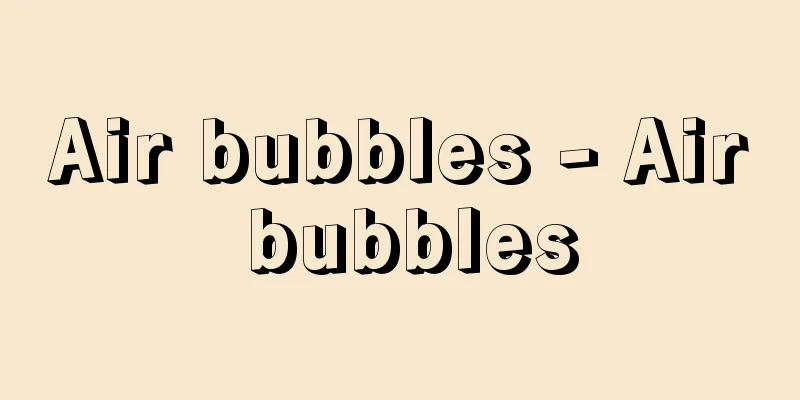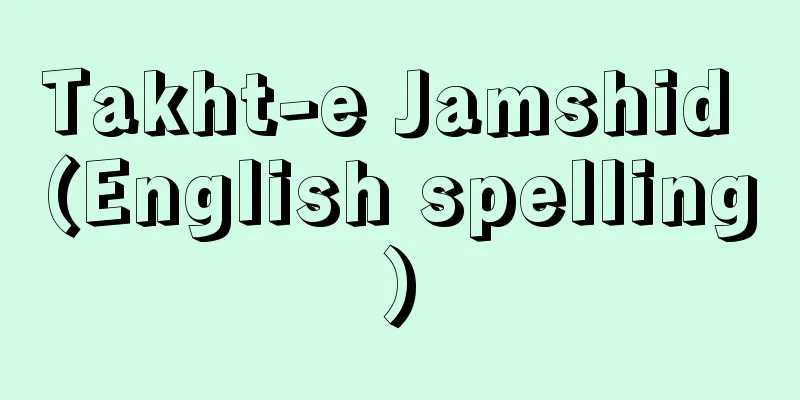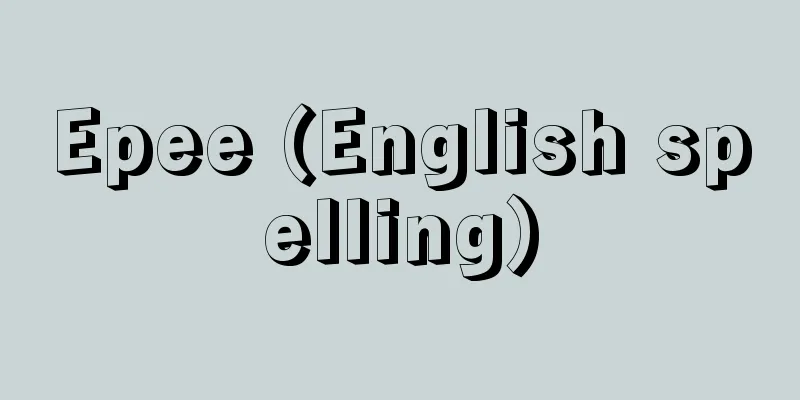Shell mound

|
It refers to a place where people discarded shells. It doesn't matter how many shells there are or how old they were. Therefore, some shell mounds are modern. However, the reason why shell mounds formed in times when there was no written language or when records of life were scarce is because shell mounds, which are a type of archaeological site, have excellent characteristics, such as being able to directly learn about hunting and fishing systems from food remains, and burial methods and characteristics from human bones. Research on shell mounds around the world began in Denmark. In 1850, Worsaae surveyed the Edelhof shell mound and excavated the Habersø shell mound. The following year, he announced that shell mounds were not natural deposits, but were accumulations of human food remains, and named them Kjökken möddinger (kitchen midden in English). The excavation of shell mounds in Denmark stimulated the discovery and excavation of shell mounds in Europe and the United States, and was also introduced to Japan via the United States. Today, shell mounds are known to be distributed all over the world. However, shell mounds are not necessarily found on the coasts of oceans, rivers, and lakes. They are found only in waters that encourage the habitation of large numbers of shellfish. In Europe, they are found mainly in Denmark, mostly on the Baltic Sea side, but also in France and Portugal. In the Americas, they are found from Alaska to South America. On the west coast of the Pacific Ocean, they are found not only in the Russian Federation, China, and Southeast Asia, but also in Sakhalin, Japan, Taiwan, the Philippines, Indonesia, and the islands of the South Pacific. [Masayuki Horikoshi] Number of shell moundsIn 1959, Sakazume Nakao announced that the total number of shell mounds from Hokkaido to Kyushu was 2,147 (967 of which were from the Jomon period). However, the total number has continued to increase since then, and it is believed that the total number is now approximately 3,000, of which the number of Jomon shell mounds is approximately 1,500. [Masayuki Horikoshi] LocationShell mounds are common in areas with well-developed tidal flats with large tidal ranges that encourage shellfish reproduction. However, when shell mounds are formed in a corner of a settlement, they are often located a few kilometers away from the sea, even at that time, rather than facing the sea (there are also shell mounds containing marine shells more than 10 kilometers away from the sea). This tells us that people did not subsist solely on fish and shellfish, but placed a great deal of importance on plant foods and hunting. [Masayuki Horikoshi] shapeThe shape of shell mounds is determined externally by the topographical conditions in which they are located (near the edge of a plateau, at the head of a valley, at the tip of a tongue-shaped plateau, or in the saddle of a ridge-shaped plateau), and internally by the location where they are dumped (covering the remains of pit dwellings, on flat ground, or on a steep slope). As a result, their planar shapes are classified as spot shell mounds, point-row shell mounds, point-row horseshoe-shaped shell mounds, arc-shaped shell mounds, horseshoe-shaped shell mounds, etc. (they are roughly in this order of size and quantity of shells), but the shapes vary considerably depending on the location and dumping site. For example, horseshoe-shaped shell mounds at the tip of a ridge-shaped plateau or at the saddle are prominent in the Tohoku region, horseshoe-shaped shell mounds on the head of a valley slope are prominent along the coast of Old Kinu Bay, and horseshoe-shaped shell mounds on the edge of a plateau or on flat ground are prominent along the coast of Tokyo Bay. [Masayuki Horikoshi] PersonalityThere are two interpretations of shell mounds. One is that all shell mounds were formed by the daily hunting of the inhabitants, and the other is that the large shell mounds were formed by the processing of dried shells as a preserved food or exchange goods in addition to the above. According to Hiroko Koike's (1975) estimation of the harvesting season based on the growth lines of clam shells, clam harvesting in the Jomon period was basically carried out throughout the year, but the peak harvesting season (60-70%) was from spring to early summer, and it gradually decreased from summer, and harvesting was inactive in late autumn and winter. Shellfish harvesting has a certain seasonality, just like today's clam hunting. It is quite conceivable that the surplus shells were processed into dried shells. However, no matter how large the shell mounds, it is unlikely that shellfish were the main food. [Masayuki Horikoshi] Shellfish typeIt is said that there are currently about 6,000 species of shellfish living along the coasts of the Japanese archipelago, but only about 500 species have been excavated from shell mounds throughout the country. Furthermore, only around 100 species are commonly seen, and only around 20 species are predominant. This shows that the main areas where they gather shellfish are the intertidal zone, and that they select shellfish that are easy to catch in large quantities and are also delicious. Representative shellfish species include oysters, cockles, hard clams, Japanese horned clams, and Japanese oysters in inland bays, oysters such as the Japanese oyster and the Japanese horned clam in open ocean sandy bottoms, mussels such as the Japanese oyster, rock shell, litchi, turban shell, Japanese mussel, and mussel in rocky reefs, Japanese mussels such as the Japanese mussel in brackish waters, and Japanese river snails, corbiculatus, pond snails, union mussels, marsh mussels, and Japanese freshwater mussels. [Masayuki Horikoshi] Other remainsWhile the soil of the shell mound ruins is acidic with a pH of around 6, due to the calcium carbonate that makes up the shells, it is alkaline with a pH of around 8. As a result, food remains from hunting and fishing - bird, animal and fish bones, bones, horns, tusks and shell products processed into tools and accessories, and even buried human and dog bones - have all remained intact and provide a wealth of information. [Masayuki Horikoshi] Research HistoryLegends that shell mounds were created by giants such as Tenaga Myojin or by a nun who lived to be 800 years old show that people from the Nara to Edo periods had a superhuman understanding of the creators of the shell mounds. E. S. Morse was the first to excavate them on the assumption that they were created by people who lived long ago, and he excavated the Omori Shell Mound (Ota Ward and Shinagawa Ward, Tokyo) in September 1877 (Meiji 10). Since then, research on the Jomon period has progressed with shell mounds at its core. Until World War II, the mainstream excavations were those that focused on collecting human bones as material for racial theory, those that attempted to systematize the chronology of pottery using the stratigraphy of shell mounds, and those that attempted to clarify the problem of marine transgression and regression by combining this with the salinity of shells. After the war, progress was made in surveys and research into shell mounds from the perspective of settlements, while detailed analytical research into fish and shellfish, along with ecological research and research into natural shell layers, has led to a deeper understanding of their livelihoods and the environment. It can be said that shell mounds are finally beginning to be understood comprehensively. [Masayuki Horikoshi] "Symposium: The Mystery of Jomon Shell Mounds" by Noritaka Ishii et al. (1978, Shinjinbutsu Oraisha)" ▽ "Reprint of "General Overview of Food in the Stone Age of the Jomon Period in Japan" by Nakao Sakazume (1984, Doyokai)" ▽ "Shell Mounds and Food Resources" by Hiromasa Kaneko (included in "Japanese Archaeology 2" 1960, Kawade Shobo)" It stands along the JR line in Oi, Shinagawa. The Omori Shell Mound is an archaeological site that straddles Shinagawa and Ota wards, and the area of the site on the Shinagawa side where this monument is located is the Shinagawa Omori Shell Mound Archaeological Garden. Nationally designated historic site Shinagawa Ward, Tokyo ©Yutaka Sakano "> Omori Shell Mound Monument It is located in Sanno, Ota Ward, a few hundred meters south of the "Omori Shell Mound" monument (Oi, Shinagawa Ward). It is said that the exact location of the shell mound discovered by Morse was unknown at one time, and so they were erected separately in the early Showa period. Both of these stone monuments are nationally designated historic sites. Ota Ward, Tokyo ©Yutaka Sakano "> Omori Shell Ruins Monument Source: Shogakukan Encyclopedia Nipponica About Encyclopedia Nipponica Information | Legend |
|
人が貝殻を捨てた場所をいう。貝殻量の多少や形成時期の新旧を問わない。したがって現代の貝塚もありうる。しかし、文字のない、あるいは生活記録の乏しいころに形成されたものを、とくに貝塚として区別しようとしているのは、直接的には、食料残滓(ざんし)によって狩猟や漁労の体系を、人骨によって埋葬法や形質を知ることができる点などに、遺跡の一型である貝塚の優れた特性を認めるからである。世界の貝塚研究は、デンマークで始まった。ウォルソーWorsaaeは1850年、エデールホーフ貝塚の踏査とハーベルセ貝塚の発掘を実施し、翌年、貝塚は自然の積成ではなく、人間の食物残骸(ざんがい)が集積したものと発表し、これをKjökken möddinger(英語のkitchen midden)と命名した。デンマークの貝塚発掘は、欧米の貝塚の発見や発掘を刺激し、日本にもアメリカ経由で伝えられた。今日、貝塚は世界各地に分布していることが判明している。もっとも、海、河川、湖沼の沿岸に必ず貝塚があるわけではない。貝の多量の生息を促す水域に限られる。ヨーロッパでは、デンマークが中心でバルト海側に多く、ほかにフランスやポルトガルにもある。アメリカ大陸でも、アラスカから南アメリカまで分布している。太平洋西岸でも、ロシア連邦、中国、東南アジアはもとより、樺太(からふと)(サハリン)、日本、台湾、フィリピン、インドネシア、南太平洋の島々にも分布している。 [堀越正行] 貝塚数1959年(昭和34)酒詰仲男(さかづめなかお)は、北海道から九州までの貝塚総数を2147(うち縄文時代967)と発表した。しかし、その後も増え続け、総数は約3000、うち縄文貝塚は約1500を上回るとみられる。 [堀越正行] 立地貝の繁殖を促す、干満差の大きい干潟の発達した地域に貝塚が多い。しかし、貝塚が集落の一角に形成された場合、海に直面した所よりも、当時でも海とは数キロメートル離れた少し奥まった所(海と10キロメートル以上離れた海産貝の貝塚もある)に位置することが多い。それは、魚貝のみで生活していたわけではなく、植物食や狩猟に大きなウェートを置いていたことを物語っている。 [堀越正行] 形状貝塚の形状は、台地縁(へり)近く、谷頭、舌状(ぜつじょう)台地の先端、尾根状台地の鞍部(あんぶ)など立地する地形条件によって外的に、さらに竪穴(たてあな)住居址(し)などの遺構の覆土、平坦(へいたん)地、緩急斜面などの捨てる場所によって内的に規定されている。その結果、平面形は、地点貝塚、点列貝塚、点列馬蹄形(ばていけい)貝塚、弧状貝塚、馬蹄形貝塚など(ほぼこの順に規模も大きく、貝殻の量も多くなる)に分けられるが、立地や捨て場によって形状がかなり異なる。たとえば、尾根状台地の先端や鞍部型馬蹄形貝塚は東北地方、谷頭斜面型馬蹄形貝塚は古鬼怒(こきぬ)湾沿岸、台地縁辺覆土・平坦地型馬蹄形貝塚は東京湾沿岸に目だつ。 [堀越正行] 性格貝塚には2通りの解釈がある。一つは、すべて貝塚は居住者の日常的捕食によって形成されたとする考えであり、もう一つは、大貝塚は、これに加えて保存食や交換財としての干し貝加工によって形成されたとする考えである。小池裕子のハマグリの貝殻成長線による採取季節推定(1975)によると、縄文時代のハマグリ採取は、基本的には周年行われていたものの、春季から夏季前半に採取の盛期(60~70%)を迎え、夏季からしだいに減少し始め、秋季後半と冬季の採取は不活発であるという。貝類採取が一定の季節性を帯びていることは、今日の潮干狩とまったく同じである。余分に採取した貝を干し貝に加工していたことは十分予想される。しかし、いかに大貝塚であろうと、貝を主食としていたとは考えられない。 [堀越正行] 貝の種類日本列島の沿岸には現在約6000種の貝が生息しているといわれているが、全国の貝塚からは、約500種ぐらいしか出土していないという。さらに普通にみかけるのは100種内外で、主体的な貝になると20種前後である。これは、彼らの採貝地が主として潮間帯であることのほか、多量に、容易にとれ、しかもおいしい貝が選択されていることを物語っている。内湾では、マガキ、ハイガイ、ハマグリ、アサリ、シオフキ、外洋砂底では、ダンベイキサゴ、チョウセンハマグリ、岩礁では、スガイ、イボニシ、レイシ、サザエ、カリガネエガイ、イガイ、汽水域ではヤマトシジミ、淡水域では、カワニナ類、シジミ類、タニシ類、イシガイ、ヌマガイ、カワシンジュガイなどが代表的貝種である。 [堀越正行] その他の遺物貝塚の土壌は、包含地遺跡がpH6前後の酸性を示すのに対し、貝殻を構成する炭酸カルシウムが作用してpH8前後のアルカリ性を示す。そのため、狩猟や漁労による食料残滓(ざんし)である鳥・獣・魚骨、利器や装身具に加工された骨・角・牙(きば)・貝製品、さらには埋葬された人骨や犬骨なども腐朽せずに遺存し、豊かな情報を提供している。 [堀越正行] 研究史貝塚は手長明神(てながみょうじん)などの巨人や、800歳まで生きた比丘尼(びくに)によってつくられたという伝説は、奈良時代から江戸時代の人々が貝塚の形成者を超人的に理解していたことを物語っている。これを、大昔住んでいた人間によるとの想定で発掘したのはE・S・モースが最初で、彼により1877年(明治10)9月、大森貝塚(東京都大田区・品川区)が発掘調査された。以後、貝塚を中心に縄文時代研究が進展した。人種論の材料としての人骨の採集に重きを置く発掘、貝塚の層位を利用して土器の編年を体系化しようとする発掘、これに貝の淡鹹(たんかん)度を絡め、海進・海退の問題を解明しようとする発掘などが、第二次世界大戦前までの主流であった。戦後、貝塚を集落という観点でとらえる調査・研究が進捗(しんちょく)する一方、魚貝類の詳細な分析研究が、生態学的研究や自然貝層の研究などとともに進み、生業や環境に関する理解が深まっている。今日ようやく貝塚が総合的に解明されつつあるといえる。 [堀越正行] 『石井則孝他著『シンポジウム 縄文貝塚の謎』(1978・新人物往来社)』▽『酒詰仲男著『日本縄文石器時代食糧総説』復刻版(1984・土曜会)』▽『金子浩昌「貝塚と食料資源」(『日本の考古学2』所収・1960・河出書房)』 品川区大井のJR線沿いに建つ。大森貝塚は品川区と大田区にまたがる遺跡で、この碑のある品川区側の遺跡一帯は品川区立大森貝塚遺跡庭園となっている。国指定史跡 東京都品川区©Yutaka Sakano"> 大森貝塚の碑 「大森貝塚」の碑(品川区大井)の数百m南、大田区山王にある。一時モースが発見した貝塚の正確な位置が不明となったことで、昭和時代初期に別々に建てられたともいわれている。この二つの石碑は、ともに国指定史跡。東京都大田区©Yutaka Sakano"> 大森貝墟の碑 出典 小学館 日本大百科全書(ニッポニカ)日本大百科全書(ニッポニカ)について 情報 | 凡例 |
Recommend
San-sagari
The name of the shamisen tuning. The 3rd string of...
Cliff-cave tombs
…In addition, there are hanging tombs (a burial c...
Mine hunting
...The surfaced mine canisters are destroyed by g...
Novum organum
A work by F. Bacon. It was first published in 1620...
Measuring microscope
Length measurement within the field of view of a m...
Equality State
…Wyoming's development began after the comple...
Sixty-six parts
〘Noun〙① Sixty-six copies of the Lotus Sutra, which...
English ivy
…There are several varieties and cultivars, and t...
New cortex - new cortex
…The cerebral cortex is considered to play the mo...
Cordyline stricta
… [Takabayashi Masatoshi]. … *Some of the termino...
Ajanta
A hilly area in Maharashtra, western India. It is ...
Pristpomoides filamentosus (English spelling) Pristpomoides filamentosus
… [Makoto Shimizu]. . … *Some of the terminology ...
Joshoji Temple
A temple of the Tenryuji school of the Rinzai sect...
Daien - Daien
The name given by Chinese during the Han Dynasty t...
Buffer; shock absorber
A mechanical element (part) that suppresses excess...

![Yatomi [town] - Yatomi](/upload/images/67cd0c203f72e.webp)







